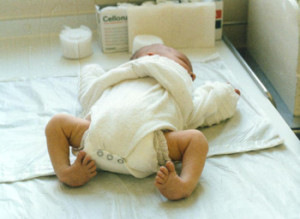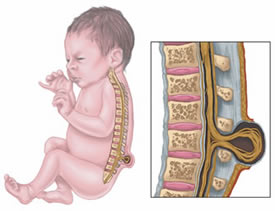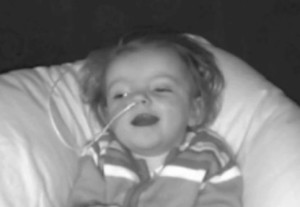All expectant parents always swing between the joy of having healthy baby and the agony of getting a defective one. The possibility of knowing about a defective child also exists through prenatal screening.
Parents assume that all birth defects are severe and fatal, but in fact much of them are treatable after birth or even before birth.
One should know the risks and the relief to prevent birth defects.
Types of birth defects
The abnormalities of structure, body metabolism or function are termed as birth defects and lead to developmental or physical disabilities, which may require medical or surgical treatment. There are nearly 4000 minor/serious birth defects, which cause death. Most can be cured by treatment.
Research has indicated that about 150,000 babies have defective births, and as per the American college of Obstetricians and gynecologists, 3 out of 100 babies have major birth defects in US.
A number of genetic and environmental factors cause the birth defects.
Structural or metabolic defects are specific problem of body chemistry in the formation of body parts. The common major structural defects are heart defect, which affect 1 in 150 US babies, along with other common defects like spina bifida, clubfoot, cleft palate and dislocated hip.
The harmful and fatal metabolic defects involve missing or incorrectly formed enzymes (a protein necessary for processing body’s chemical substances), which are not visible and affect 1 in 3500 babies. Tay-Sachs disease which fatally affects the nervous system and phenylketonuria that affects the body protein processing, are the metabolic defects.
Congenital infections are caused when a mother gets infection before or during the pregnancy which causes the birth defects like rubella, cytomegalovirus, toxoplasmosis, syphilis, parvovirus, Venezuelan equine encephalitis and sometime chickenpox. There is higher risk for rubella if infected during the initial period of pregnancy (about 20%), but due to immunization it is almost eradicated. CMV is the most common congenital infection which causes mental retardation and loss of hearing.
Other types of birth defects may be caused due to alcoholism of mother and medications used for epilepsy.
Causes of birth defects
There is no way to ensure the birth of child without birth defects. Parents without any health problems or those who have taken all necessary precautions during pregnancy are not immune towards conceiving a child with birth defects.
As per March of Dimes, about 60% of birth defects are due to unknown causes. The rest are caused by environmental or genetic factors or due to a combination of the two.
One missing or faulty gene of chromosomes can play the role of birth defects.
Each child inherits one of each pair of chromosomes from each parent. Sometimes a defect may occur if only one parent passes the faulty gene in spite of receiving a normal gene from the other parent which is called dominant inheritance. Such a process includes a birth defect like and Marfan syndrome and achondroplasia (dwarfism).
When both parents each pass defective gene for the same disease, the child receives recessive inheritance genetics or cystic fibrosis or Tay-Sachs disease.
Some boys, who inherit disorders of X chromosome linked from the gene of their mothers, can get affected by color blindness or hemophilia. Apart from the number or structure of chromosome, an error in the formation of an egg or sperm may provide the baby with too many or too few or damaged chromosomes and cause birth defects such as Down syndrome. The risk for such conditions increases with the age of mother.
Environmental reasons for birth defects depend on the mother’s health, infections (like rubella) during pregnancy, exposure to chemicals or diseases, certain medications used by mother and mother’s alcohol abuse during pregnancy can cause birth defects.
A combination of environmental and genetic factors causes multifactorial birth defects like cleft lip and palate and heart and neural tube defects.
List of birth defects
- Even though the cause is unknown, the cleft lip and palate occur due to various environmental and genetic factors, and are frequent in Latinos, Asians and Native Americans. Such birth defects can be surgically repaired after birth.
- Cerebral palsy that results in muscle motion deficiencies may not be detected for weeks and months after birth depending on the condition. Around 70% of the people with cerebral palsy suffer from mental retardation and find difficulty in speaking, walking and swallowing. In US, about 10,000 newborns in a year suffer from cerebral palsy. There are no definitive causes, but prematurity or brain damage during last trimester or at the time of birth, head injury or meningitis after birth or genetic reasons may also cause cerebral palsy. Various therapies for muscle control, speech, and occupational therapies can help improve the condition.
- Clubfoot is a defect of foot and ankle wherein the bones, joints, muscles and blood vessels form incorrectly, and affect 1 in 735 babies born in US. For unknown reasons, boys are affected twice the number of girls. The treatment for this is casting after birth, and surgery if necessary followed by casting.
- When the round upper end of thighbone does not fit in the socket of pelvis, either on one side or both sides, then it is called as congenial hip dislocation. The exact cause is not known, but occurs in 1 or 2 in every 1000 births with girls being at higher risk. Treatment involves placing the child in soft sling for 6 to 9 months and surgery if needed.
- When the child’s thyroid gland is absent or underdeveloped, congenial hypothyroidism can occur due to inadequate production of thyroid hormones which are required for normal growth and brain development. In US, 1 in 3000 to 4000 babies, are affected by it. Screening of all newborns is a routine for identification and treatment.
- Fetal alcohol syndrome causes slow growth, mental retardation, abnormal facial features, and problems in central nervous system. Every year it is estimated that 2000 to 12000 babies are born with this defect in US. It has no treatment except preventing alcohol during pregnancy.
- There are other common birth defects such as Neural tube defects, defects of the heart, defects of the gastrointestinal tract and genetic birth defects that require prompt diagnosis and treatment.
Prevention of birth defects
There are a lot of birth defects that cannot be prevented. But one can definitely take a few precautionary measures to decrease the risk of birth defects.
- Check for the presence of STDs and folic acid levels, before opting for pregnancy
- Avoid unnecessary medications, smoking and alcohol consumption during pregnancy
- If there is a family history of birth defects in either of the parents, then due consultations with doctor is essential for effective preventive options.
- Exercise and follow healthy habits and diet
- Opt for early and regular prenatal care.
Birth defects pictures



crearea aplicatiilor android
I like the valuable info you supply on your articles.I will bookmark your blog and check once more here regularly.I am reasonably sure I’ll learn lots of new stuff proper here!Good luck for the following!
Hello! I could have sworn I’ve been to this blog before but after reading through some of the post Irealized it’s new to me. Anyways, I’m definitely delighted I found it andI’ll be bookmarking and checking back frequently!